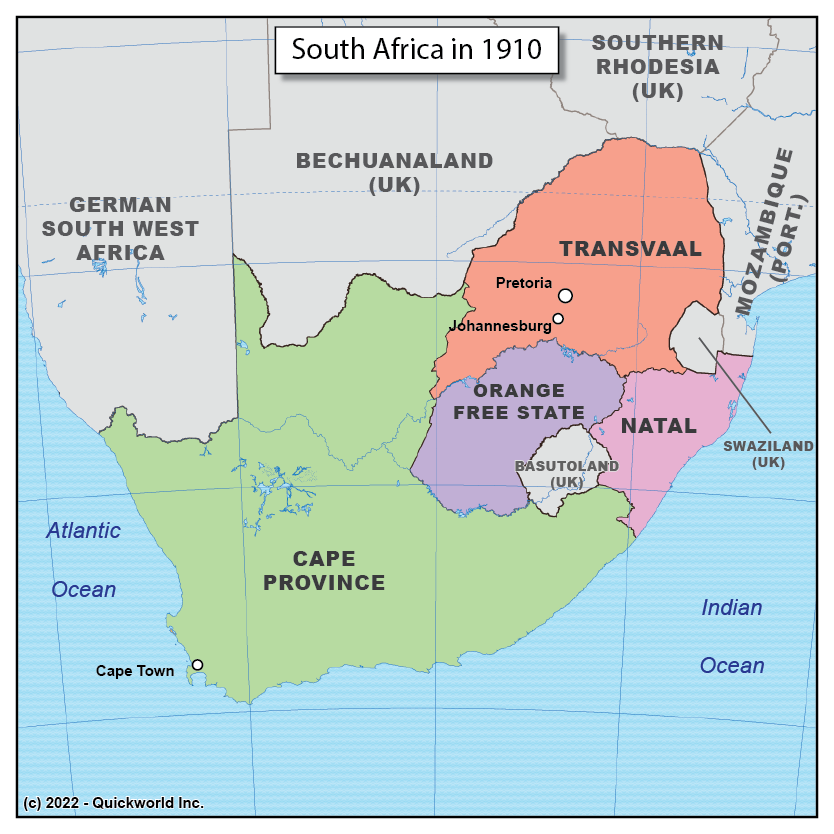Our series on Territorial Formation takes us to Southern Africa.
The country now known as the Republic of South Africa was first created in 1910 as the Union of South Africa, the federation of four former British colonies with distinct historical backgrounds.
The largest of the four provinces, in the Southwest, was the Region of the Cape (named after the Cape of Good Hope, a prominent geographic feature in Southern Africa). Created as a Dutch Colony in the Seventeenth Century, it became British after the Napoleonic Wars, when Britain increased its global presence at the expense of continental powers. Its original population was composed of various tribes of Khoisan origin, that is, people with physical characteristics that were distinct from the Bantus, who constitute the largest racial group in sub-Saharn Africa. These indigenous people were enslaved by Dutch colonists and adopted their language, Afrikaans, which is derived from old Dutch.
Further North were two previous colonies, the Orange Free State and the Transvaal Republic, also founded by Dutch colonists, who migrated in great numbers after the British takeover of the Cape. The two states were at times independent, at times under British protection, until a brutal war at the turn of the twentieth Century annexed both of them into the British Empire.
On the Eastern side was another British colony, Natal, which was created after major conflicts with the Zulus, a local ethnic group that gave the British Empire one of its most challenging colonial wars, until they submitted at the end of the nineteenth century.
This created an extremely diverse society, with the coexistence of Khoisan and Bantu ethnic groups as well as settlers of Dutch, British and South Asian origins. The delicate political order created by the British would not survive the antagonism of the Afrikaners, white people of Dutch extraction who, as the largest European ethnic group, became the dominant force and created the Apartheid regime after World War II.
More on South Africa
South Africa in 1910


